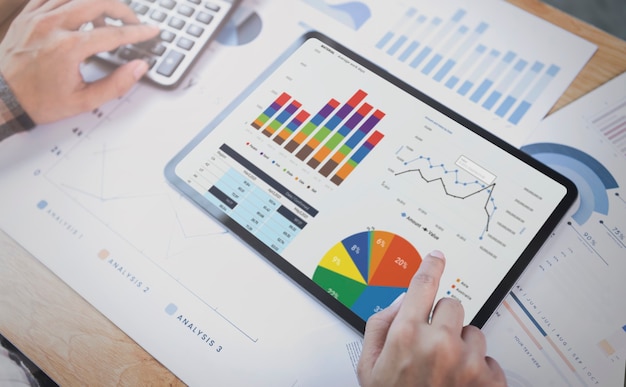In the world of trading, Contracts for Difference (CFDs) have emerged as popular derivatives, offering traders the opportunity to speculate on the price movements of various financial instruments without owning the underlying asset. However, success in CFD trading requires more than just luck; it demands a deep understanding of market analysis techniques. In this article, we’ll delve into the key methods CFD traders can employ to analyse markets effectively.
Fundamental Analysis
Fundamental analysis involves evaluating the intrinsic value of an asset by examining various economic, financial, and qualitative factors. It focuses on understanding the underlying factors that drive the market, such as economic indicators, company financial statements, and industry trends.
Economic indicators, including Gross Domestic Product (GDP), inflation rates, and employment data, provide insights into the overall health of an economy. Company financial statements, such as income statements, balance sheets, and cash flow statements, help assess a company’s financial performance and stability. Industry trends, encompassing market demand, competition, and regulatory environment, offer valuable context for analysing specific sectors.
In CFD trading, fundamental analysis is crucial for assessing the intrinsic value of assets. By analysing economic indicators, traders can gauge the overall economic outlook and identify potential market trends. Company financial statements help evaluate the financial health and growth prospects of individual companies, while industry trends assist in identifying sectors poised for growth or decline. Check out ADSS trading for more info.
Technical Analysis
Technical analysis involves analysing historical price and volume data to forecast future price movements. It focuses on identifying patterns, trends, and key levels of support and resistance in price charts.
Price charts, including line, bar, and candlestick charts, provide visual representations of price movements over time. Volume analysis helps assess the strength and sustainability of price trends by analysing trading volume accompanying price movements. Technical indicators, such as moving averages, Relative Strength Index (RSI), Moving Average Convergence Divergence (MACD), and Bollinger Bands, offer additional insights into market dynamics and potential entry and exit points.
In CFD trading, technical analysis plays a vital role in identifying trading opportunities and timing entry and exit points. By analysing price charts and technical indicators, traders can identify trends, assess market sentiment, and anticipate potential price reversals. Technical analysis provides a systematic framework for making informed trading decisions based on historical price data and market dynamics.
Sentiment Analysis
Sentiment analysis involves evaluating market sentiment and investor psychology to gauge the overall mood of the market. It focuses on assessing the collective emotions and opinions of market participants through various indicators and sources.
Market sentiment indicators, such as the Fear and Greed Index and the Volatility Index (VIX), provide insights into investor sentiment and risk appetite. News and social media analysis help gauge market sentiment by monitoring news articles, social media posts, and other sources for sentiment indicators and potential market-moving events.
In CFD trading, sentiment analysis can help traders assess market sentiment and identify potential trading opportunities. By analysing market sentiment indicators and monitoring news and social media, traders can gain valuable insights into investor sentiment and anticipate market trends. Sentiment analysis complements fundamental and technical analysis by providing additional context and confirmation of market trends and trading signals.
Quantitative Analysis
Quantitative analysis involves using mathematical and statistical models to analyse market data and identify trading opportunities. It focuses on developing quantitative trading strategies based on empirical evidence and historical data.
Statistical models, including regression analysis and time series analysis, help identify patterns and relationships in market data. Algorithmic trading, encompassing automated trading systems and high-frequency trading algorithms, enables traders to execute trades automatically based on predefined criteria and trading rules.
In CFD trading, quantitative analysis can be used to develop and backtest trading strategies based on statistical models and algorithmic trading techniques. By analysing historical market data and identifying patterns and relationships, traders can develop quantitative trading strategies that exploit market inefficiencies and generate consistent returns. Quantitative analysis provides a systematic approach to trading that removes emotional biases and enhances decision-making.
Risk Management
Risk management is crucial in CFD trading to protect capital and mitigate potential losses. It involves identifying, assessing, and managing risks associated with trading activities. Key risk management techniques include setting stop-loss and take-profit levels to limit potential losses and lock in profits, position sizing to manage the amount of capital at risk on each trade, and diversification to spread risk across different assets and markets.
In CFD trading, effective risk management is essential for long-term success and sustainability. By implementing risk management techniques and strategies, traders can protect capital, preserve profits, and minimise the impact of adverse market movements. Risk management ensures disciplined and prudent trading practices that help traders navigate volatile and unpredictable markets.
Conclusion
In conclusion, mastering market analysis techniques is essential for success in CFD trading. Fundamental analysis provides insights into the intrinsic value of assets, while technical analysis helps identify trading opportunities and timing entry and exit points. Sentiment analysis gauges market sentiment and investor psychology, while quantitative analysis offers systematic approaches to trading based on mathematical and statistical models.




